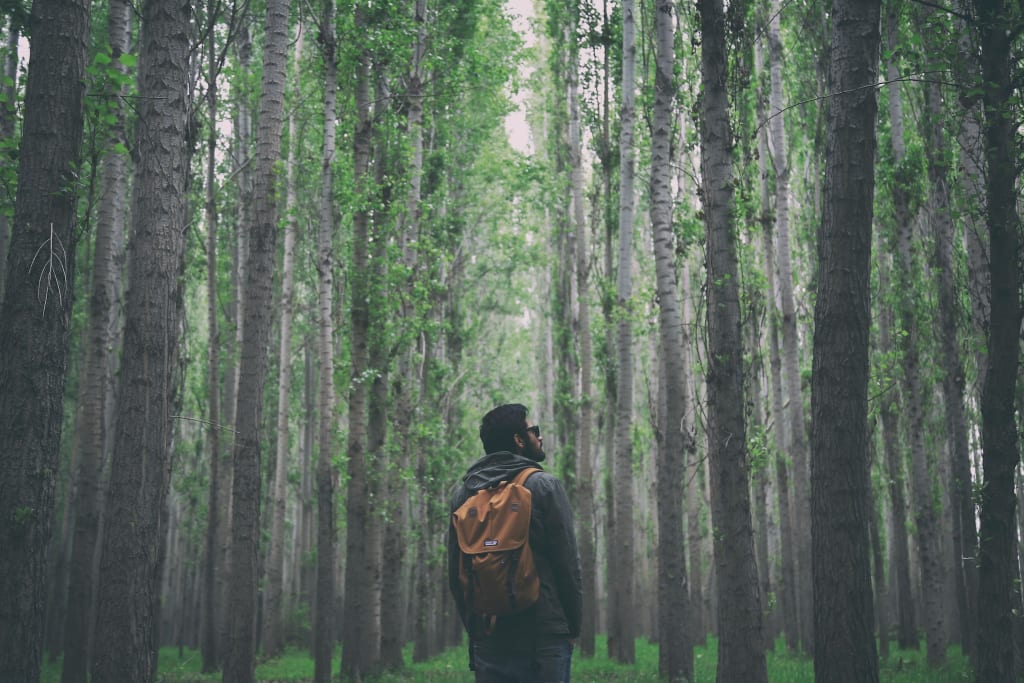What Trees Can Teach Us About Community and Connection
Learning to listen to nature’s arboreal allies

For several years, one of my favorite daily rituals has been taking a walk through our property’s cathedral-like aspen grove intricately interspersed with majestic Douglas-fir trees. These arboreal walks sustain and enliven each day, from the buttery, yellow-leafed spring to the frosty, snow-covered winter.
As I recently weaved my way through the fairy-tale land of flora and fauna, I started to think about how the interconnectedness of trees acts as a metaphor for life and the collective interconnectedness of every living (and even non-living) species.
I remembered how, shortly after we moved into our cabin surrounded by towering conifers, my husband remarked, “It is so amazing to be surrounded by aspens, which look like individual trees but which are all connected underground by one invisible root.”
“One root! What a wonderful metaphor for existence,” I replied.
Thinking about this, I continued on my odyssey into the heart of the forest, walking slowly as my boots crunched through the crystalline snow, stopping to admire several Douglas-fir saplings, each growing up against a stately aspen companion that shields the young trees from the harsh elements in order to foster their survival.
The trees seemed to sing a secret song brimming with the sublime wonders of the universe, whispering words as old as time: “We are still here. We are your oldest relatives. Think of us as your primordial parents.” In fact, the world’s oldest living organism is a quaking aspen.
As I attuned myself to the heartbeat of the forest, the words “A tree is a little bit of the future” by Wangari Maathai suddenly flashed across my mind. Everything on Earth depends on the magic of trees that has been woven into the fabric of life. Quite simply, an absence of trees means an absence of life.
I ventured deeper into the natural world that surrounded me, letting the feeling of being encased by these woodland wonders lull me into a state of solidarity with nature. Like everything under the sun, there is a time for being solitary and a time for being surrounded by others.
Each sapling communicates with its towering counterparts, some over a hundred years old, their trunks saluting the sky, their winter crowns sharing the sun and space, careful not to endanger their neighbors by consuming more than their share of life’s essential elements.
I wish that humans lived more like this, I pondered, only taking what we need so that everyone has enough. But maybe, if we all do what we can with what we have, together we can make the world a more positive, equal place. It’s already happening, I am sure, and just like our arboreal ancestors, we can find beauty in our differences and illumination in the certainty that nothing lasts forever.
The Science and Wonder Of Trees
My curiosity peaked, I dove into the latest research on these ancient giants, starting with David George Haskel’s The Songs of Trees: Stories from Nature’s Great Connectors, and then with the educational and eye-opening Ted Talk: How trees talk to each other, by scientist Suzanne Simard.
The foundation of forests, trees share an underground yet interdependent other-world full of infinite biological pathways, just like our human DNA.
Through this quiet cohesive way of the woods, scientific evidence suggests that one root can transmit carbon to another root, allowing trees to “talk” to one another using connected cooperation.
Specifically, aspen and douglas-fir trees speak across species with carbon, nitrogen, phosphorus, and water, each sharing the natural elements with their leafy counterparts.
In an interview with Yale Environment 360, ecological pioneer Suzanne Simard said, “A forest is a cooperative system. Trees communicate their needs and send each other nutrients via a network of latticed fungi buried in the soil — in other words, they “talk” to each other.”
Trees form these perennial partnerships to ensure their survival in a world where things often change rapidly, whether from climate change, disastrous weather, or a vicious virus. These seemingly-silent allies give and do so much more than we often realize; what we see above ground is only the result of a complicated, life-sustaining root system buried just a few inches beneath our feet.
Humans also flourish with collaborative, shared relationships, sometimes offering a helping hand to others and sometimes needing that helping hand ourselves. Like trees, we become each other’s allies to weather life’s metaphorical storms.
Here are some other metaphorical lessons from trees:
We Are All Different Yet All The Same.
Since the sun first graced Earth with its brilliant gaze, trees have grown, lived, and died as our counterparts, reminding us that all branches and buds share one proverbial predecessor just like we all share the same genetic material and a common ancestor, while still being incredibly, beautifully diverse.
We Are Always Growing.
Even though trees look like they only move when the wind hits them, they are always growing and adapting. Humans are similar in that, while life’s inevitable challenges may sway us momentarily, if we have strong roots, core values, and a sense of self, it is easier to bounce back and continue growing into what we are meant to be.
We Are Interconnected And Interdependent.
Like humans, trees are interconnected even when that connection isn’t visible to the naked eye, sharing in the wonders of the world, each searching for contentment, fulfillment, and a sense of peace. And because trees are an interconnected community, if one aspect of one tree is affected or damaged, the collective whole feels the disturbance.
We are not so different from trees because we are also interdependent, both with each other and with nature, and as has been made abundantly clear in this time of COVID-19. We need nature more than nature needs us.
The relationships we form are what gives life its depth, essence, and magnificence.
When we listen to trees, we are also listening to ourselves as part of the great vast whole, the steady heartbeat of nature, always flowing, growing, and changing.
Final Thoughts:
We often feel like we’re standing alone, unique, individual, and separate. But underneath the surface, we are bonded as one, like the aspen trees, sharing a common experience. Once we realize our connected roots, we can all grow together.
About the Creator
Aurora Eliam
A freelance writer, editor and animal rehabiitator.






Comments
There are no comments for this story
Be the first to respond and start the conversation.